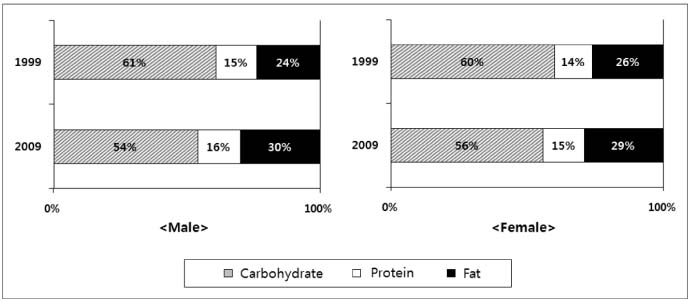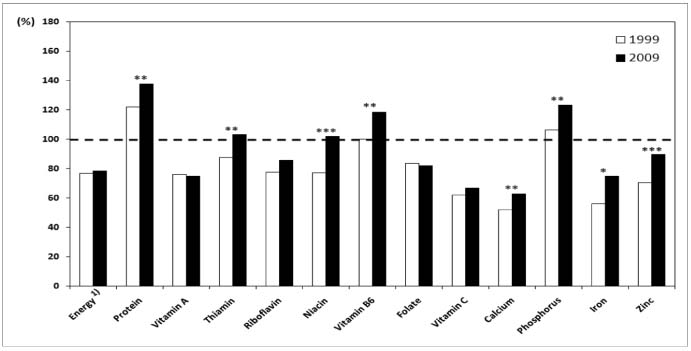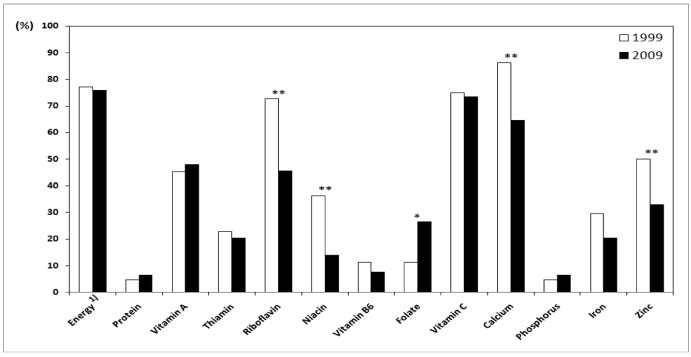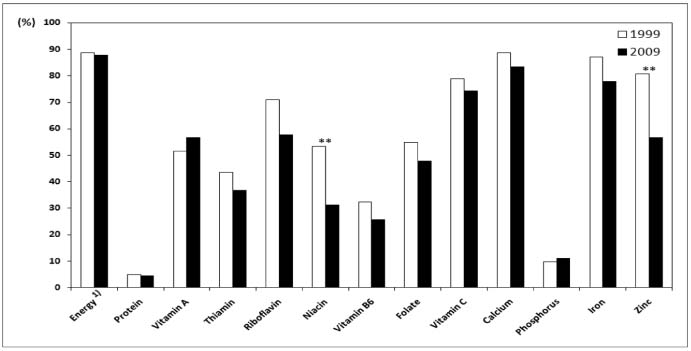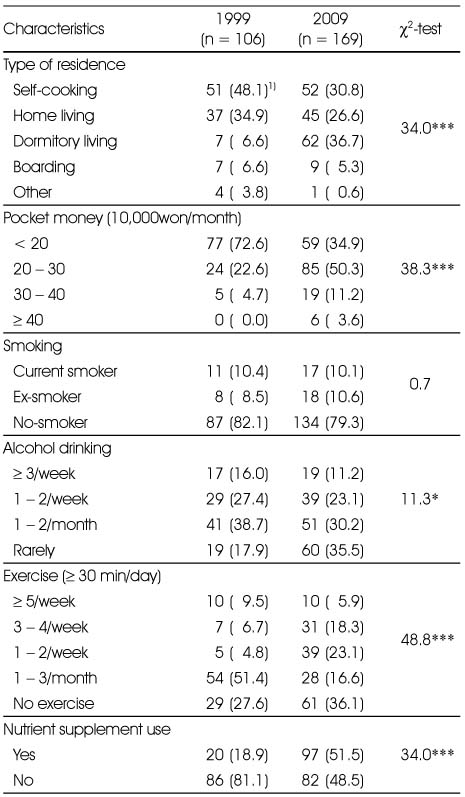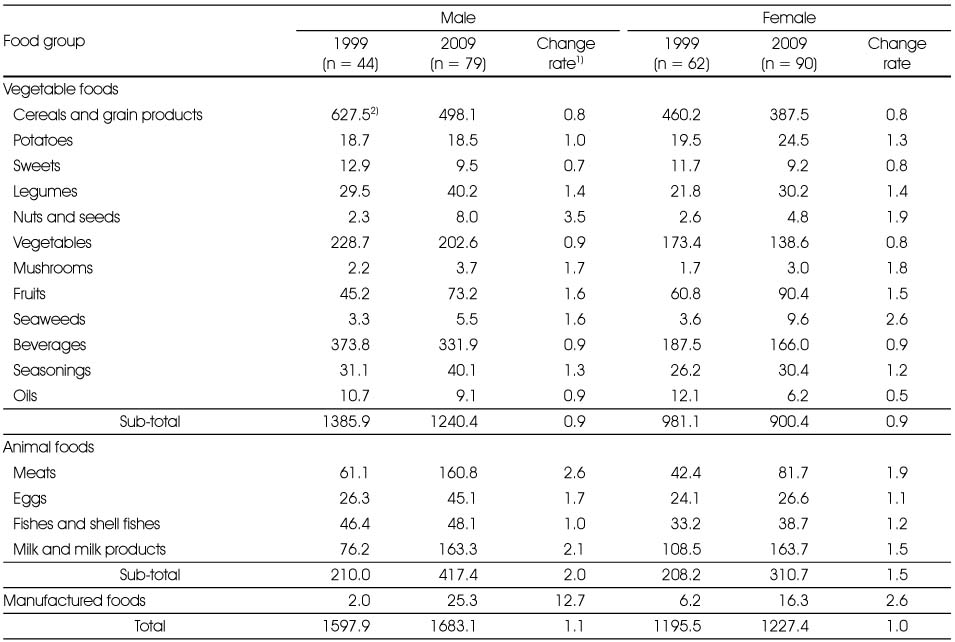References
1. Cheong SH, Chang KJ. Anthropometric measurement, dietary behavior and nutrient intake of the nation-wide college students attending a nutrition education via internet. J Korean Soc Food Sci Nutr 2006. 35(5)565–571.
2. Choi MJ, Jo HJ. Studies on nutrient intake and food habit of college students in Taegu. Korean J Nutr 1999. 32(8)918–926.
3. Choi SN, Chung NY, Song CH, Kim SR. Bone density and nutrient intake of university students. Korean J Food Cult 2007. 22(6)841–847.
4. Chung HJ, Chang KJ. A study on correlations between dietary nutrients and body composition of college students. J Korean Soc Food Sci Nutr 2006. 35(10)1378–1384.
5. Han YH, Yon MY, Hyun TS. Effect of prune supplementation on dietary fiber intake and constipation relief. Korean J Community Nutr 2008. 13(3)426–438.
6. Hyun TS, Han YH. Comparison of folate intake and food sources in college students using the 6th vs. 7th nutrient database. Korean J Nutr 2001. 34(7)797–808.
7. Kim HY, Jeon DW. Relationships among personality preferences, dietary habit and nutrient intake of university students. Korean J Food Cult 2003. 18(5)418–427.
8. Kim KH. A study of the dietary habits, the nutritional knowledge and the consumption patterns of convenience foods of university students in the Gwangju area. Korean J Community Nutr 2003. 8(2)181–191.
9. Kim WS, Kim MJ, Hyun TS. Differences in characteristics and dietary habits between volunteers and selected subjects in nutrition survey. Korean J Community Nutr 2004. 9(4)511–518.
10. Koh MS, Kim SE. A study of the dietary habits, diversity of food intake and nutrient intake of Silla university students. J Nat Sci 2006. 1531–44.
11. Korea Health Industry Development Institute. Development of nutrient database - 5. Dietary Fiber Composition of Foods - 2005.
12. Korean Nutrition Society. Recommended Dietary Allowances For Koreans 1995. 6th Revisionth ed.
13. Korean Nutrition Society. Recommended Dietary Allowances For Koreans 2000. 7th Revisionth ed.
14. Korean Nutrition Society. Dietary Recommended Intakes for Koreans 2005.
15. Korean Nutrition Society. Food values 2009.
16. Korean Nutrition Society. Dietary Recommended Intakes for Koreans 2010.
17. Lee MS, Kwak CS. The comparison in daily intake of nutrients, quality of diets and dietary habits between male and female college students in Daejeon. Korean J Community Nutr 2006. 11(1)39–51.
18. Lee YS. A study on the eating behavior, nutrient intake and health condition of college students attempting weight control in the Daegu Area. J East Asian Soc Diet Life 2003. 13(6)577–585.
19. Ministry of Health & Welfare. Korean National Health and Nutrition Examination Survey 1999.
20. Ministry of Health & Welfare, Center for Disease Control and Prevention. Korea Helath Statistics 2008, Korea National Health and Nutrition Examination Survey 2008.
21. Sung MJ, Chang KJ. Correlations among life stress, sleep, anthropometric measurement and nutrient intakes of college students. J Korean Soc Food Sci Nutr 2007. 36(7)840–848.
22. Yon MY, Hyun TS. Dietary habits, food frequency and dietary attitudes by gender and nutrition knowledge level in upper-grade school children. Korean J Community Nutr 2008. 13(3)307–322.
23. You JS, Chin JH, Chang KJ. Prevalence of constipation, bowel habits and nutrient intakes of college students in Incheon area. Korean J Nutr 2009. 42(8)702–713.
24. You JS, Chin JH, Kim MJ, Chang KJ. College students' dietary behavior, health-related lifestyles and nutrient intake status by physical activity levels using International Physical Activity Questionnaire (IPAQ) in Incheon Area. Korean J Nutr 2008. 41(8)818–831.
25. Yu JY, Ro HK. Gender differences in obesity rates, nutrient intakes, and dietary behaviors among college students. J East Asian Soc Diet Life 2009. 19(6)846–855.

